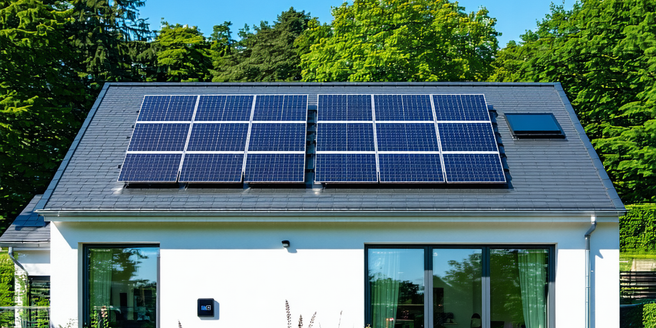Energy Efficiency In Modern Homes

The Importance of Energy Efficiency in Today’s Homes
Energy efficiency in modern homes is crucial for reducing utility costs and minimizing environmental impact. As more people recognize the urgency of addressing climate change, energy-efficient homes have moved from being a luxury to a necessity. Improved insulation, energy-efficient appliances, and the use of renewable energy sources contribute to reducing a home’s carbon footprint. Not only do these features lower utility bills, but they also increase property value. Encouraging the use of energy-efficient measures can lead to healthier living conditions by reducing indoor air pollution and providing better temperature control. Homeowners and builders are becoming more conscious of these benefits, leading to a growing demand for more sustainable living solutions.
Innovative Technologies Enhancing Energy Savings
The adoption of innovative technologies plays a pivotal role in enhancing energy savings within modern homes. Smart home devices, such as programmable thermostats and advanced lighting systems, allow homeowners to control energy use more effectively. Solar panels and energy storage solutions are becoming more accessible and affordable, offering renewable energy as a viable option for many households. In addition, advancements in materials science have led to the development of high-performance windows and superior insulation materials that significantly reduce heat transfer. As technology continues to evolve, it presents exciting opportunities for further reducing energy consumption and promoting sustainable living.
Design Strategies for Maximizing Energy Efficiency
Design strategies for maximizing energy efficiency begin with the orientation and layout of the home to take advantage of natural light and passive heating and cooling. Incorporating open floor plans and strategic window placement can maximize natural light, reducing the need for artificial lighting. The choice of building materials also affects energy efficiency, with materials like insulated concrete forms and sustainable wood options providing excellent thermal properties. Moreover, integrating green roofs and walls can help manage environmental conditions around the home, reducing heat gain in the summer and heat loss in the winter. These strategies underline the importance of holistic design approaches to create energy-efficient living spaces.
Government Incentives and Rebates for Energy-Efficient Homes
Government incentives and rebates play a vital role in encouraging homeowners and builders to adopt energy-efficient practices. Many regions offer tax credits, rebates, or grants to offset the initial costs of implementing energy-efficient technologies, such as solar panels or efficient HVAC systems. These financial incentives lower the barrier for entry, making it more feasible for individuals to invest in upgrading their homes. Additionally, governments often provide informational resources and support programs to educate homeowners about the benefits and best practices of energy efficiency. Understanding and utilizing these incentives can result in significant long-term savings and a reduced environmental footprint.
Common Myths About Energy Efficiency Debunked
There are several myths surrounding energy efficiency that can lead to misconceptions about its benefits and feasibility. One common myth is that energy-efficient homes are significantly more expensive to build; while there may be higher upfront costs, these are often offset by long-term savings on energy bills. Another misconception is that energy efficiency compromises comfort; in reality, energy-efficient homes often offer improved comfort due to better temperature regulation and air quality. People also believe that small actions, like switching to LED bulbs, have minimal impact. In truth, these actions collectively contribute substantially to energy savings. Dispelling these myths is crucial in promoting the broader adoption of energy-efficient practices.
Future Trends in Energy-Efficient Homebuilding
The future of energy-efficient homebuilding is set to leverage groundbreaking technologies and innovative designs to further minimize energy consumption. The integration of smart grid technology allows homes to interact dynamically with the energy supply system, optimizing energy use throughout the day. Prefabricated components and 3D-printed building materials are emerging trends that offer precision and efficiency while reducing material waste. Moreover, the focus on net-zero energy homes, which produce as much energy as they consume, is becoming a critical goal for builders. As energy prices fluctuate and environmental concerns grow, the emphasis on energy-efficient home designs will inevitably continue to expand, fostering a future where sustainable living is the standard.